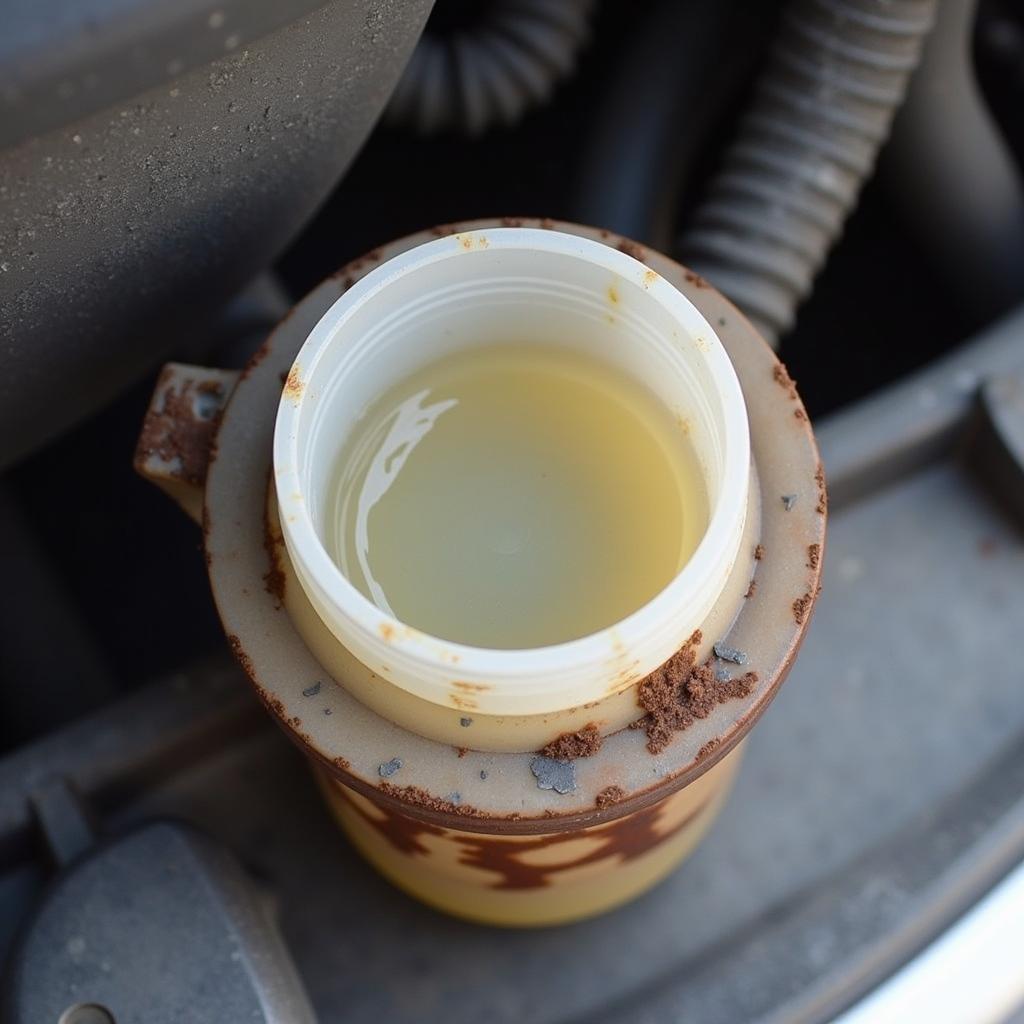You’re cruising down the road in your vintage 1978 Dodge Aspen, the wind in your hair, when suddenly you hit the brakes and – bam – the brake warning light illuminates the dashboard. Don’t panic! While this situation can be unnerving, understanding the potential causes and solutions can help you address the problem and get back on the road safely.
This article dives into the common reasons why your 1978 Dodge Aspen’s brake warning light might be flashing when you press the pedal, empowering you with the knowledge to diagnose and potentially fix the issue yourself.
Understanding Your Brake Warning Light
The brake warning light is a crucial component of your car’s safety system. It’s designed to alert you to potential issues within the braking system, from low brake fluid to more serious problems.
When you press the brake pedal, the light should illuminate momentarily as a system check. However, if the light stays on, flickers intermittently, or only comes on when you apply the brakes, it’s signaling a problem that needs immediate attention.
Common Causes of a Brake Warning Light
There are several potential culprits behind a brake warning light that activates when pressing the pedal in a 1978 Dodge Aspen. Here’s a breakdown of the most common:
1. Low Brake Fluid
The most common reason for a brake warning light is low brake fluid. Your brake system operates on hydraulic pressure. When you press the pedal, brake fluid amplifies the force, pushing the brake pads against the rotors to slow or stop your vehicle.
If the fluid level drops too low, air can enter the system, compromising braking performance and potentially leading to brake failure.
Solution: Check your brake fluid reservoir. If it’s low, carefully add the correct type of brake fluid for your 1978 Dodge Aspen, as specified in your owner’s manual.
Important: If you need to add brake fluid frequently, it indicates a leak in the system that requires professional attention.
 Low Brake Fluid Reservoir
Low Brake Fluid Reservoir
2. Worn Brake Pads
Brake pads are designed to wear down over time. As they wear, the brake caliper pistons have to extend further to create the necessary friction to stop your vehicle. This extension can lead to a lower brake fluid level, triggering the warning light.
Solution: Inspect your brake pads. If they appear thin or you notice a grinding noise when braking, it’s time for a replacement.
Pro Tip: It’s always a good idea to replace your brake pads in pairs (both front or both rear) to maintain even braking performance.
3. Brake System Leak
A leak in your brake system can cause a dangerous drop in brake fluid pressure. This can occur in the brake lines, hoses, calipers, or even the master cylinder.
Solution: Look for signs of a leak, such as fluid on the ground under your vehicle or on the inside of the tires. If you suspect a leak, do not drive your car. Have it towed to a qualified mechanic immediately for inspection and repair.
4. Faulty Brake Light Switch
The brake light switch is responsible for activating your brake lights when you press the pedal. It’s also connected to the brake warning light circuit in many vehicles. A malfunctioning switch can cause the warning light to come on incorrectly.
Solution: A faulty brake light switch typically requires replacement.
5. ABS System Issues
If your 1978 Dodge Aspen is equipped with an Anti-lock Braking System (ABS), a problem with the ABS module or wheel speed sensors can also trigger the brake warning light.
Solution: Diagnosing ABS issues often requires specialized diagnostic tools. It’s best to consult a qualified mechanic if you suspect an ABS-related problem.
What to Do When Your Brake Warning Light Comes On
“A glowing brake warning light is a serious warning, not to be ignored,” advises master mechanic, Richard Johnson, ” Even if the brakes seem to be working fine, a drop in brake fluid or a hidden leak can quickly escalate into a dangerous situation. Get it checked out promptly.”
Remember these essential tips if you encounter a brake warning light:
- Don’t panic: Stay calm and safely pull over to a safe location.
- Assess the situation: Check your brake fluid level and look for any visible signs of leaks.
- Take action: If the fluid level is low and you feel safe adding more, do so. However, if you’re unsure or suspect a leak, call a tow truck and have your car transported to a trusted mechanic.
Conclusion
Addressing a brake warning light in your 1978 Dodge Aspen is crucial for your safety and the well-being of your vehicle. By understanding the potential causes and taking appropriate action, you can ensure that your braking system remains reliable and your classic car continues to provide many more miles of enjoyment. Remember, when it comes to brakes, err on the side of caution and consult a professional if you have any doubts.
